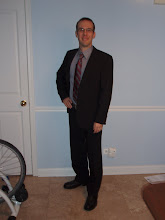HCI Forum topic DISS 720
http://www.cc.gatech.edu/fce/ecl/projects/dejaVu/mm/index.html
Memory Mirror
There are particular household items that people use for one specific task (e.g. taking a pill, feeding the cat) that usually is simple and short to do. However, these tasks become difficult to remember doing when they are repeated often enough but not in a strict routine, so the memory confusion arises between the repeated episodes. Did we do this already today or was that yesterday or the day before or do we still need to do this today? A similar confusion arises between multiple care-takers. Is it my turn today to do this or is it your turn or has this already been taken care of?
Memory mirror reflects a period of time (e.g. 24 hours of a day). As we use an item, it is visually posted to the mirror as shown in figure 1, and is recorded in a history log. If we had already used an item, an episode mirror reflects details of the previous number of usages. The memory mirror also warns of possibly lost items that have yet to be returned.
The memory mirror system uses RFID (radio frequency identification) technology which is available yet expensive today. Each household item (e.g. medicine bottles, food containers) has a RFID tag on the bottom, and the designated storage area (e.g. medicine cabinet, key tray) has a RFID reader on the top. Each item is photographed and entered into the system's inventory. With this setup, the memory mirror system tracks the removal and return of each differently tagged object to and from the storage area.
Memory Mirror
There are particular household items that people use for one specific task (e.g. taking a pill, feeding the cat) that usually is simple and short to do. However, these tasks become difficult to remember doing when they are repeated often enough but not in a strict routine, so the memory confusion arises between the repeated episodes. Did we do this already today or was that yesterday or the day before or do we still need to do this today? A similar confusion arises between multiple care-takers. Is it my turn today to do this or is it your turn or has this already been taken care of?
Memory mirror reflects a period of time (e.g. 24 hours of a day). As we use an item, it is visually posted to the mirror as shown in figure 1, and is recorded in a history log. If we had already used an item, an episode mirror reflects details of the previous number of usages. The memory mirror also warns of possibly lost items that have yet to be returned.
The memory mirror system uses RFID (radio frequency identification) technology which is available yet expensive today. Each household item (e.g. medicine bottles, food containers) has a RFID tag on the bottom, and the designated storage area (e.g. medicine cabinet, key tray) has a RFID reader on the top. Each item is photographed and entered into the system's inventory. With this setup, the memory mirror system tracks the removal and return of each differently tagged object to and from the storage area.


0 Comments:
Post a Comment
<< Home